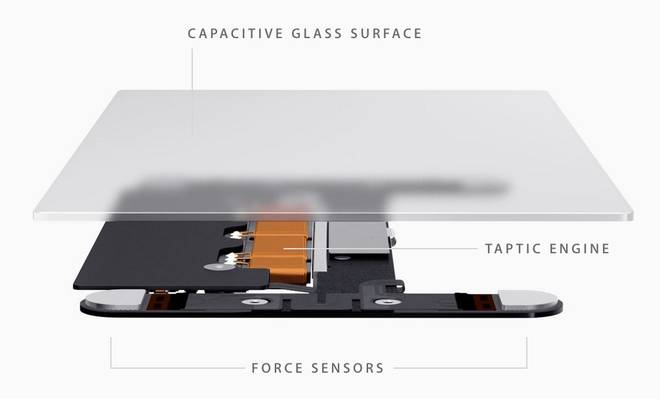What is Force Touch? Apple's haptic feedback technology explained

Apple's more recent MacBooks have trackpads that detect the force of a tap, responding differently to variations in pressure.
The technology, which involves something called haptic feedback, is known as Force Touch. This is everything you need to know about Apple's Force Touch haptic feedback technology.
What's different about the Force Touch trackpad?
The function of a trackpad has not changed much over the years. It is typically a stationary touch-mouse with clickable buttons, though sometimes it looks and acts like one big button. The Force Touch trackpad is different, and not just because it has a capacitive glass surface.

Force Touch
Apple describes Force Touch as the "most significant new sensing capability" since it included Multi‑Touch in older MacBook laptops.
Apart from the usual gestures (like scrolling, swiping, and pinching), the Force Touch trackpad has a customisable feature aptly titled Force Touch. You can adjust the feature's sensitivity, so that the pressure needed to register a click is determined by you.
Force Touch can even tell whether you're clicking with your thumb or another finger and auto-adjusts to the sensitivity level.
Force sensors
The Force Touch trackpad doesn't actually move when pressed. It has "force sensors" under its four corners, and they detect subtle differences in the amount of pressure you apply, making it possible to perform a variety of different functions in different apps.
Force sensors not only detect your click, but also move the trackpad laterally toward you, mimicking the downward motion of a trackpad.
Haptic feedback
The Force Touch trackpad responds to your taps and presses with haptic feedback technology that you can actually feel. Haptic feedback allows the trackpad to recreate the sense of touch by simulating vibrations and other motions, meaning it'll let you feel a click on the trackpad, even though the trackpad isn't actually moving downward when clicked.
Haptic feedback is made possible due to Taptic Engine.
Taptic Engine
Taptic Engine is a small device attached to the back of the trackpad. It mimics the downward motion (or physical depression) of a trackpad by tapping back in the opposite direction of your click, thus simulating the physical movement, and fooling you into thinking the trackpad is moving.
A traditional trackpad doesn't do any this but instead has a diving board mechanism underneath, and that's what moves downward and clicks.

How to use the Force Touch trackpad examples
Force click
The Force sensors detect more than one type of click (i.e., a light click can perform one action, while a harder click can perform another, and you're able to adjust how hard of a press is needed for any type of action), but a hard press that you continue to press is something that Apple dubs Force click.
You can Force click on the trackpad to enable new capabilities, such as looking up the definition of a word or previewing a file.
Accelerators
Another type of new click or gesture is dubbed accelerators, and it works like this: gradually add pressure to the Force Touch trackpad to vary the speed with which you fast-forward through a movie.
You can also gradually add pressure to zoom in on a location in Maps.
Pressure-sensitive drawing
A third type of click/gesture is for pressure-sensitive drawing. In other words: you can press lightly on the Force Touch trackpad to create a thin stroke while drawing or harder for a thick one when, let's say, creating a signature for forms in Preview.
The trackpad will of course also send a tangible response to your fingertip whenever you perform certain actions, including Force click, accelerators, and pressure-sensitive drawing, meaning you'll be able to feel even mundane tasks like like aligning annotations on a PDF.

Force Touch on Apple Watch
In Apple Watch, Force Touch also senses force. It uses tiny electrodes around the flexible Retina display to distinguish between a light tap and a deep press, and that allows Apple Watch to trigger instant access to a range of contextually-specific controls.
You can press firmly to bring up additional controls in Messages, for instance, or you can select different watch faces, search for an address in Maps, etc.
Force Touch on iPhone
It's not exactly the same technology, but it works in a similar way. The iPhone XR ditched 3D Touch for Haptic Touch in 2018 and the 2019 iPhones followed suit. You can read all about Haptic Touch in our separate feature.
Want to know more?
Check out Apple's pages for the MacBook and Apple Watch, in which the company has fully detailed how Force Touch works.
from Pocket-lint https://ift.tt/2ZFHqjv
via IFTTT
No comments: